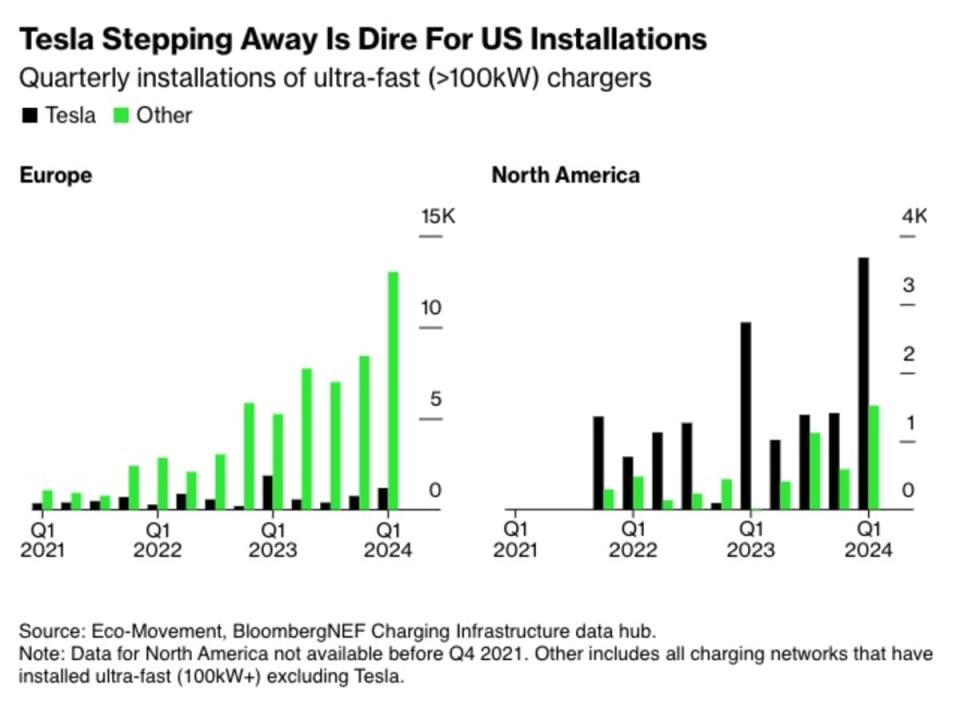Why did Musk ax the Supercharger team?

Elon Musk’s decision to dismiss much of Tesla’s Supercharger team this week came as a shock. The move poses a particular threat to charging in the U.S. and the transition to electric vehicles in the region.
Rising competition, potentially unattractive profit margins and Musk’s focus on robotaxis all likely play a role in this bewildering story.
Tesla’s roughly 58,000 Superchargers have set the standard for EV drivers the world over. Musk’s decision to slow expansion will be felt most acutely in North America, where the network accounts for 74% of all ultra-fast chargers tracked by BloombergNEF.
The company has consistently installed more ultra-fast chargers in North America than all other networks combined. The first quarter of the year was no exception: Tesla installed a record 3,680 Superchargers, while its competitors collectively installed fewer than half that number.
Tesla’s imminent slowdown may put a damper on the region’s EV ambitions. BNEF forecast in its Long-Term Electric Vehicle Outlook that there needs to be around 400,000 ultra-fast chargers in North America to serve a fleet of 40 million battery-electric vehicles by 2030, and lay the foundation for over 90 million EVs just five years later.
Charging is a different story in Europe, where Tesla’s slowdown won’t be felt as strongly. A total of 390 companies added more than 13,000 ultra-fast chargers in the first quarter, which was 11 times greater than Tesla’s installations. Perhaps Musk is betting that the North American charging industry will look more like Europe’s in the years to come, and isn’t inclined to commit the capital required to keep growing the network at pace in an increasingly crowded market.


 Yahoo Autos
Yahoo Autos 